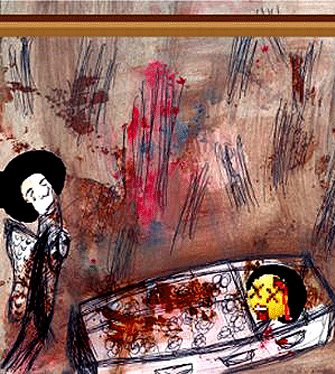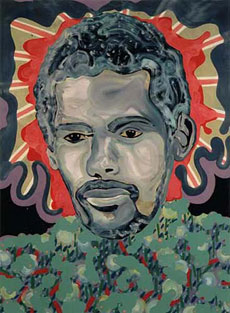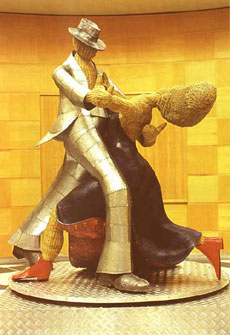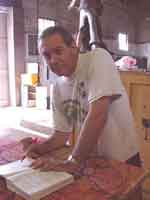
THE 90s

Thami Mnyele Foundation promotes the exchange of art and culture between Africa and the Netherlands.
the Foundation engages African artists of all disciplines of contemporary visual art (painting, drawing, photography, sculpture, video, film, audio and multi media) to work for three months in the Thami Mnyele Foundation studio, located in an old school building in the centre of Amsterdam.
The Foundation is named in commemoration of the South African artist and freedom fighter Thami Mnyele, who inspired Dutch artists to set up an artists-in-residence program.
MUSTAFA MALUKA
"I am my main subject. I change so much so fast. I can’t stay on one angle all the time. My perspectives change the more I learn, read, come in touch with people."
"I make paintings
mostly, but sometimes I write about my painting
process. Sometimes I
DJ on my own
radio show, promote
gigs, or release records on my
record label."
 Mustafa
Maluka (1976) took up residency at the Thami Mnyele Foundation in 1998.
Mustafa
Maluka (1976) took up residency at the Thami Mnyele Foundation in 1998.
His current body of work deals with his attempt to develop a theory towards a
definition of the aesthetics of trauma. Maluka had started working with the
subject of trauma very early in his work. One of his strongest early portrait
paintings was of a man in a Nazi war camp.
His current technique, while relying more on colour than painting skill, has
evolved to a point where having his computer crash a few times during the making
of a work can sometimes be the best thing for a piece. Aesthetically, he has
incorporated the anomalistic interference caused by pushing his machine to the
max, thereby driving his processor to the limit.
ANDRIES BOTHA


Andries Botha’s (1952) career as a sculpture has been marked by his truly innovative use of traditional African materials and methods to make large-scale pieces which are at once very bewildering, yet strike a deep cultural chord.
He uses a great variety of materials: works are created from thatching, wattle and wax. This variety is its specific characteristics - referencing inherited practices and locally symbolic materials, such as tyres and telephone wire, the works mesh Western and African culture.
‘I have always tried to use my work as a sort of visual testimony to the
violation of the state. One of the functions of the intellectual is to create
within their work a sort of archive of memory where the social discourses or the
nation is plotted."